Hangar 9 HAN4885 Manuale del proprietario
- Categoria
- Giocattoli telecomandati
- Tipo
- Manuale del proprietario

Van’s RV-4 30cc
Instruction Manual
Bedienungsanleitung
Manuel d’utilisation
Manuale di Istruzioni

2
Part # English Deutsch Français Italiano
REPLACEMENT PARTS • ERSATZTEILE • PIÈCES DE RECHANGE • PEZZI DI RICAMBIO
HAN488501 Fuselage Rumpf Fuselage Fusoliera
HAN488502 Wing Left-Hand Linker Flügel Aile gauche Ala sinistra
HAN488503 Wing Right-Hand Rechter Flügel Aile droite Ala destra
HAN488504 Fuselage Hatch Rumpfklappe Capot du fuselage Portello della fusoliera
HAN488505 Horizontal Stabilizer Left-Hand Linker horizontaler Stabilisator Stabilisateur horizontal gauche Stabilizzatore orizzontale sinistro
HAN488506 Horizontal Stabilizer Right-Hand Rechter horizontaler Stabilisator Stabilisateur horizontal droit Stabilizzatore orizzontale destro
HAN488507 Vertical Stabilizer Vertikaler Stabilisator Stabilisateur vertical Stabilizzatore verticale
HAN488508 Cowling Motorhaube Capot moteur Sportello vano motore
HAN488509 Spinner; 4.0-inch Spinner; 4.0-inch (101,6mm) Cône; 4.0-inch (101,6mm) Ogiva dell’elica; 4.0-inch (101,6mm)
HAN488510 Canopy Kabinenhaube Verrière Cappottina
HAN488511 Pilot Figure Pilot Figurine du pilote Pilota
HAN488512 Cockpit Details Cockpitteile Détails du cockpit Dettagli cabina di pilotaggio
HAN488513 EP Box and Battery Tray EP-Kasten und Akku-Fach Boîtier EP et support de batterie Scatola EP e portabatteria
HAN488514 Fuel Tank; 15 oz Kraftstoffmotor, 444cc (15 oz) Réservoir de carburant; 0,4L (15oz) Serbatoio carburante; 15 oz
HAN488515 Landing Gear Fahrwerk Train d’atterrissage Carrello di atterraggio
HAN488516 Landing Gear Fairings Bugschürze des Fahrwerks Carénages du train d’atterrissage Carenature carrello di atterraggio
HAN488517 Wheel Pants Radverkleidung Carénage de roue Scarpette copriruote
HAN488518 Wing and Stabilizer Tubes Flügel und Stabilisatorrohre Tubes de stabilisateur et d'aile Baionette alari e tubi stabilizzatori
HAN488519 Tail Wheel Assembly Spornrad m. Zbh. Assemblage de roulette de queue Gruppo del ruotino di coda
HAN488520 Hardware Set Kleinteile Set Sachet de visserie Set accessori
HAN488521 Pushrod Set Gestänge / Anlenkungen Set Jeu de tringleries Set aste di comando
HAN488522 Wheels; 110mm Räder; 110mm Roues; 110mm Ruote; 110 mm
HAN488523 Navigation Light Covers Abdeckung der Navigationsbeleuchtung Protections des feux de position Coperture luci
HAN488524 Decal Sheet Dekorbögen Planche de décoration Foglio con decalcomanie
SPECIFICATIONS • SPEZIFIKATIONEN • SPÉCIFICATIONS • SPECIFICHE
85.0 in (2,16 m)
1551 sq in (100,1 dm2) Total/Totale
73 in (1,85 m)
17–19 lbs (7,7–8,6 kg)
2-Stroke Gas: 30cc, 4-Stroke gas/petrol: 36cc
2-Takt Benziner: 30cc, 4-Takt Benzin: 36cc
2 temps Essence: 30cc, 4 temps essence: 36cc
2-Tempi Gas: 30cc, 4 tempi benzina: 36 cc
Electric Power Power: Power 160 Brushless
Elektro Antrieb Power: Power 160 Brushless
Moteur électrique (EP): Power 160 Brushless
Motore elettrico: Power 160 Brushless
6-channel (or greater) with 8 servos
6-Kanal (oder größer) mit 8-Servos
6 voies (ou plus) avec 8 servos
a 6 canali (o più) con 8 servo
Spinner: 4-inch
Spinner: 101,6mm
Cône: 101,6mm
Ogiva dell’elica: 101,6mm

3
Van’s RV-4 30cc
Part # English Deutsch Français Italiano
REQUIRED RADIO EQUIPMENT • ERFORDERLICHE RC AUSRÜSTUNG • ÉQUIPEMENT RADIO REQUIS • APPARECCHIATURE RADIO NECESSARIE
SPMSA6180 x8 A6180 Digital Aircraft Servo A6180 Digitaler Flugzeugservo Servo digital AR6180 pour avion Servo digitale A6180
HAN9154 x2 Aluminum Servo Arm, 1.5-inch: SPM, JR Aluminium-Servoarm, 38mm: SPM,JR Palonnier servo aluminium 38mm: SPM, JR Squadretta servo alluminio, 38 mm: SPM, JR
HAN9157 x1 Aluminum Double Servo Arm, 3-inch: SPM, JR
Doppel-Servoarm aus Aluminium, 76mm (3 Zoll):
SPM,JR
Bras de servo double en aluminium, 76,2mm (3po):
SPM, JR
Squadretta servo doppia in alluminio, 3 pollici:
SPM, JR
SPMA3002 x4 Heavy-Duty Servo Extension 9-inch Hochleistungs-Servoverlängerung 23cm (9 Zoll) Rallonge de servo très robuste 228,6mm (9po) Prolunga servo 9 pollici
2-STROKE GAS • 2-TAKT BENZINER • 2 TEMPS ESSENCE • 2-TEMPI A BENZINA
APC17080 x1 Competition Pattern Prop,17 x 8 17 x 8 Propeller Hélice 17 x 8 17 x 8 Elica
EVOM4 x1 Pitts-style Muffl er, Dual Pipe: 33GX Pitts-artiger Schalldämpfer, Doppelrohr: 33GX 33GX - Silencieux Pitts double sortie Scarico stile Pitts, doppio tubo: 33GX
DUB799 x1 Tygon Gas Tubing, 3 feet Medium Tygon-Gasrohre, 1m (3 Fuß) m Durchschnitt Tube à essence Tygon, 91,4cm (3pi) moyen Tubo per carburante Tygon, 3 piedi, medio
EVOA112 x2 Evolution 3 Wire Ignition/Receiver Switch Evolution Zündschalter Interrupteur Evolution 3 fi ls Allumage/RX
Evolution, interruttore a 3 fi li accensione/
ricevitore
EVOE33GX x1 33GX 33cc (2.00 cu. in.) Gas Engine 33GX 33cc (2,00 Kubikzoll) Kraftstoffmotor Moteur essence Evolution 33GX 33cc (2.00) Motore a benzina 33GX 33 cc
HAN116 x1 Fuel Dot Filler with “T” Coupler Hangar 9 Tanknippel mit T Stück u. Überlauf Fitting Point de remplissage de carburant avec coupleur en T Bocchettone di riempimento carburante con
SPMB3000LFRX x2 3000mAh 2S 6.6V Li-Fe Receiver Battery 3000mA 2S 6,6V LiFe Empfänger-Akku Batterie du récepteur Li-Fe 3000mAh 2S 6,6V Batteria ricevitore 3000 mAh 2S 6,6 V Li-Fe
ELECTRIC POWER • ELEKTROANTRIEB • MOTEUR ELECTRIQUE (EP) • MOTORE ELETTRICO
APC18010E x1 Electric Propeller,18 x 10E Elektro Propeller, 18 x 10E Hélice électrique, 18 x 10E Elica elettrica sottile, 18 x 10E
CSE010000401 x1 Castle BEC PRO V2, 010-0004-01 (Optional) Castle BEC PRO V2, 010-0004-01 (optional) Castle BEC PRO V2, 010-0004-01 (optionnel) BEC Castle PRO V2, 010-0004-01 (opzionale)
CSE010010400 x1 Phoenix Edge 120HV, 50V 120-Amp ESC
Phoenix Edge 120HV, 50V 120 A
Geschwindigkeitsregler
Contrôleur Phoenix Edge 120HV, 50V 120A ESC Phoenix Edge 120HV, 50 V 120 A
EFLB50005S30 x2
5000mAh 5S 18.5V 30C LiPo Battery,12AWG
EC5
™
5000 mA 5S 18,5V 30C LiPo-Akku,12AWG EC5
Batterie Li-Po 5S 18,5V 5000mA 30C, 12AWG prise
EC5
Batteria LiPo 30C 18,5 V 5S 5000 mAh,12AWG
EC5
EFLAEC508 EC5 Battery Series Harness, 10 Awg E-fl ite EC5 Akkukabel seriell, 10Awg
Cordon de branchement de batteries en série, prises
EC5
Cavi batteria EC5, 10 AWG
EFLM4160A x1 Power 160 Brushless Outrunner Motor, 245Kv Bürstenloser Außenläufer-Motor Leistung 160, 245Kv
Moteur à cage tournante sans balais Power 160 de
245Kv
Motore brushless a cassa rotante Power 160,
245Kv

4
Part # English Deutsch Français Italiano
REQUIRED ADHESIVES • ERFORDERLICHE KLEBSTOFFE • TYPES DE COLLES • ADESIVI NECESSARI
DLMAD44 Roket Rapid CA 5-10 sec: 20g Roket Rapid CA 5-10 s: 20g Colle cyano Roket Rapid 5-10 sec: 20g Colla cianoacrilica Roket Rapid 5-10 sec: 20 g
DLMAD45 Roket Max CA 10-20 sec: 20g Roket Max CA 10-20 s: 20g Colle cyano Roket Max 10-20 sec: 20g Colla cianoacrilica Roket Max 10-20 sec: 20 g
PAAPT715 CA Accelerator Sekundenkleber (CA) Aktivator Accélérateur de colle CA Accelerante colla CA
PAAPT35 15-Minute Epoxy 15 Minuten Epoxy Époxy 15 minutes Colla epossidica 15 minuti
PAAPT42 Threadlock Schraubensicherungslack Frein-fi let Frenafi letti
DLMAD12 R/C Modeller Canopy Glue: 4 oz R/C Modeller Kanzelkleber: 113,4g (4 oz) Colle à verrière R/C Modeller: 113g Colla per capottine R/C Modeller: 4 oz
REQUIRED TOOLS • BENÖTIGTES WERKZEUG • OUTILS REQUIS • ATTREZZI NECESSARI
Box wrench: 1/2-inch Ringschlüssel: 1/2-inch Clé hexagonale: 1/2-inch Chiave esagonale: 1/2-inch
Drill Bohrer Mini-perceuse Trapano
Drill bit: 1/16-inch, 5/64-inch, 1/8-inch
5/32-inch, 3/16-inch
Bohrer: 1,5mm, 2mm, 3mm, 4mm, 4,5mm Forêt : 1,5mm, 2mm, 3mm, 4mm, 4,5mm
Punte per trapano: 1,5mm, 2mm, 3mm, 4mm,
4,5mm
Felt-tipped pen Faserstift Feutre fi n effaçable Pennarello
Epoxy brush Pinsel Pinceau Epoxy Spazzole epoxy
Flat fi le Flachfeile Lime plate Lima piatta
Hemostats Klemme Pince Hemostat Pinzetta
Hex wrench: 3/32-inch, 1.5mm, 2mm, 2.5mm,
3mm, 4mm
Inbusschlüssel: 3/32-inch, 1,5mm, 2mm, 2,5mm,
3mm, 4mm
Tournevis hexagonal: 3/32-inch, 1,5mm, 2mm, 2,5mm,
3mm, 4mm
Chiave esag.: 3/32-inch, 1,5mm, 2mm, 2,5mm,
3mm, 4mm
Hobby knife with #11 blade Hobbymesser mit # 11 Klinge Couteau : Lame numéro 11 Taglierino: #11 lama
Isopropyl alcohol Isopropyl Alkohol Alcool isopropylique Alcol isopropilico
Low-tack tape Kreppband Adhésif de masquage Nastro a bassa aderenza
Needle nose pliers Spitzzange Pince fi ne Pinze a becco stretto
Nut driver: 1/4-inch, 4mm, 5.5mm Steckschlüssel. 1/4-inch, 11/32-inch Clés à douilles : 1/4-inch, 11/32 pouce Chiave per dadi: 1/4-inch, 11/32-inch
Paper towels Papiertücher Papier absorbant Asciugamani di carta
Pencil Stift Crayon à papier Matita
Phillips screwdriver: #1 Phillips Schraubendreher: #1 Tournevis cruciforme: #1 Cacciavite a croce: #1
Pin vise Handbohrer Porte forets Trapano manuale
Pliers Zange Pince Pinze
Ruler Lineal Réglet Righello
Sandpaper Schleifpapier Papier de verre Carta vetrata
Scissors Schere Ciseaux Forbici
Side cutters Seitenschneider Pince coupante Lama laterale
Square Geodreieck Équerre Squadra
Tap and drill set, English Gewindeschneider und Bohrerset Taraud et foret Set punte e maschi, Inglese
Tap Handle Halter für Gewindeschneider Épingles Impugnatura per maschiare
T-pins T- Nadeln Epingles Spilli a T
Toothpicks Zahnstocher Cure dents Stuzzicadenti

5
Van’s RV-4 30cc
Part # English Deutsch Français Italiano
OPTIONAL ITEMS • OPTIONALE TEILE • ÉLÉMENTS OPTIONNELS • ARTICOLI OPZIONALI
WGT206 x1 Extreme Medium Tote Double 52”x31”x21”
Extreme Medium Tote Double 132cm x 79cm x 53cm
(52 Zoll x 31 Zoll x 21 Zoll)
Sac moyen extrême double 1,3 x 0,8 x0,5m (52 x 31
x 21po)
Extreme Medium Tote Double 52”x31”x21”
SPMA3004 x2 Heavy Duty Servo Extension 18-inch Schwerlast-Servoverlängerung 460mm (18 Zoll) Rallonge de servo, 460 mm Prolunga servo 460 mm
EVOA100 x2 Optical Ignition Kill Switch Optischer Zünd-Notausschalter Interrupteur optique coupe circuit d'allumage Kill switch ottico per avviamento
SPM20000 x1 DX20 20 Channel System with AR9020 M2 DX20 20-Kanal-System mit AR9020 M2 Système à 20canaux DX20 avec AR9020 M2 Sistema canali DX20 20 con AR9020 M2
SPMAR7350 x1
AR7350 7 Channel AS3X RX with integrated
telemetry
AR7350 7 Kanal AS3X RX mit integrierter Telemetrie
Récepteur Spektrum AR7350 7 voies AS3X avec
télémétrie intégrée
Ricevente AR7350 AS3X 7 canali con telemetria
integrata
SPMAR8010T x1 AR8010T 8 Channel Air Telemetry RX AR8010T 8 Kanal Air Telemetrie RX AR8010T Air Telemetry RX 8canaux
Ricevitore AR8010T 8 canali con telemetria
integrata
SPMAR9140T x1 AR9140T 9 Channel PowerSafe Tele RX AR9140T 9 Kanal PowerSafe Telemetrie RX AR9140T PowerSafe Tele RX 9canaux
Ricevitore AR9140T 9 canali PowerSafe con
telemetria integrata
SPMAR9320T x1 AR9320T 9 Channel Carbon Fuse Tele RX AR9320T 9 Kanal Carbon Fuse Telemetrie RX AR9320T Carbon Fuse Tele RX 9canaux
Ricevitore AR9320T 9 canali Carbon Fuse con
telemetria integrata
SPMB1450LFRX x1 1450mAh 2S 6.6V Li-Fe Receiver Battery 1450mA 2S 6,6V LiFe Empfänger-Akku Batterie du récepteur Li-Fe 1450mAh 2S 6,6V Batteria ricevitore 1450 mAh 2S 6,6 V Li-Fe
SPMR8000 x1 DX8 Transmitter Only MD2 DX8 Sender nur MD2 Transmetteur DX8 uniquement MD2 Trasmettitore DX8 solo MD2
SPMR9900 x1 DX9 Transmitter Only MD2 DX9 Sender nur MD2 Transmetteur DX9 uniquement MD2 Trasmettitore DX9 solo MD2
SPMR9910 x1 DX9 Black Transmitter Only MD2 DX9 schwarzer Sender nur MD2 Transmetteur noir DX9 uniquement MD2 Trasmettitore nero DX9 solo MD2

6
NOTICE
All instructions, warranties and other collateral documents are subject to change at the sole discretion of Horizon
Hobby, LLC. For up-to-date product literature, visit horizonhobby.com and click on the support tab for this product.
The following terms are used throughout the product literature to indicate various levels of potential harm when
operating this product:
Meaning of Special Language
NOTICE: Procedures, which if not properly followed, create a possibility of physical property damage AND a little or
no possibility of injury.
CAUTION: Procedures, which if not properly followed, create the probability of physical property damage AND a
possibility of serious injury.
WARNING: Procedures, which if not properly followed, create the probability of property damage, collateral damage,
and serious injury OR create a high probability of superfi cial injury.
WARNING: Read the ENTIRE instruction manual to become familiar with the features of the product before operating.
Failure to operate the product correctly can result in damage to the product, personal property and cause serious
injury.
This is a sophisticated hobby product. It must be operated with caution and common sense and requires some basic
mechanical ability. Failure to operate this Product in a safe and responsible manner could result in injury or damage
to the product or other property. This product is not intended for use by children without direct adult supervision. Do
not attempt disassembly, use with incompatible components or augment product in any way without the approval
of Horizon Hobby, LLC. This manual contains instructions for safety, operation and maintenance. It is essential to
read and follow all the instructions and warnings in the manual, prior to assembly, setup or use, in order to operate
correctly and avoid damage or serious injury.
AGE RECOMMENDATION: NOT FOR CHILDREN UNDER 14 YEARS. THIS IS NOT A TOY.
USING THE MANUAL
This manual is divided into sections to help make assembly easier to understand.
SAFETY WARNINGS AND PRECAUTIONS
Read and follow all instructions and safety precautions before use. Improper use can result in fi re, serious injury and
damage to property.
Components
Use only with compatible components. Should any compatibility questions exist, please refer to the product
instructions, component instructions or contact the appropriate Horizon Hobby offi ce.
Flight
Fly only in open areas to ensure safety. It is recommended fl ying be done at radio control fl ying fi elds. Consult local
ordinances before choosing a fl ying location.
Propeller
Keep loose items that can become entangled in the propeller away from the prop. This includes loose clothing or other
objects such as pencils and screwdrivers. Keep your hands away from the propeller as injury can occur.
Batteries
Always follow the manufacturer’s instructions when using and disposing of any batteries. Mishandling of Li-Po
batteries can result in fi re causing serious injury and damage.
Small Parts
This kit includes small parts and should not be left unattended near children as choking and serious injury could result.
SAFE OPERATING RECOMMENDATIONS
• Inspect your model before every fl ight to ensure it is airworthy.
• Be aware of any other radio frequency user who may present an interference problem.
• Always be courteous and respectful of other users in your selected fl ight area.
• Choose an area clear of obstacles and large enough to safely accomodate your fl ying activity.
• Make sure this area is clear of friends and spectators prior to launching your aircraft.
• Be aware of other activities in the vicinity of your fl ight path that could cause potential confl ict.
• Carefully plan your fl ight path prior to launch.
• Abide by any and all established AMA National Model Aircraft Safety Code.
BEFORE STARTING ASSEMBLY
• Remove parts from bag.
• Inspect fuselage, wing panels, rudder and stabilizer for damage.
• If you fi nd damaged or missing parts, contact your place of purchase.
If you fi nd any wrinkles in the covering, use a heat gun (HAN100) and covering glove (HAN150) or covering iron
(HAN101) with a sealing iron sock (HAN141) to remove them. Use caution while working around areas where the colors
overlap to prevent separating the colors.
• Charge transmitter and receiver batteries.
• Center trims and sticks on your transmitter.
• For a computer radio, create a model memory for this particular model.
• Bind your transmitter and receiver, using your radio system’s instructions.
IMPORTANT: Rebind the radio system once all control throws are set. This will keep the servos from moving to
their endpoints until the transmitter and receiver connect. It will also guarantee the servo reversal settings are
saved in the radio system.

7
Van’s RV-4 30cc
Propeller
Halten Sie lose Gegenstände die sich im Propeller verfangen können weg vom Propeller. Dieses gilt auch für Kleidung
oder andere Objekte wie zum Beispiel Stifte oder Schraubendreher.
Halten Sie ihre Hände weg vom Propeller, es besteht akute Verletzungsgefahr.
Akkus
Folgen Sie immer den Herstelleranweisungen bei dem Gebrauch oder Entsorgung von Akkus. Falsche Behandlung von
LiPo Akkus kann zu Feuer mit Körperverletzungen und Sachbeschädigung führen.
Kleinteile
Dieser Baukasten beinhaltet Kleinteile und darf nicht unbeobachtet in der Nähe von Kindern gelassen werden, da die
Teile verschluckt werden könnten mit ernsthaften Verletzung zur Folge.
EMPFEHLUNGEN ZUM SICHEREN BETRIEB
• Überprüfen Sie zur Flugtauglichkeit ihr Modell vor jedem Flug.
• Beachten Sie andere Piloten deren Sendefrequenzen ihre Frequenz stören könnte.
• Begegnen Sie anderen Piloten in ihrem Fluggebiet immer höfl ich und respektvoll.
• Wählen Sie ein Fluggebiet, dass frei von Hindernissen und groß genug ist.
• Stellen Sie vor dem Start sicher, dass die Fläche frei von Freunden und Zuschauern ist.
• Beobachten Sie den Luftraum und andere Flugzeuge/Objekte die ihren Flugweg kreuzen und zu einem Konfl ikt
führen könnten.
• Planen Sie sorgfältig ihren Flugweg vor dem Start.
VOR DEM ZUSAMMENBAU
• Entnehmen Sie zur Überprüfung jedes Teil der Verpackung.
• Überprüfen Sie den Rumpf, Tragfl ächen, Seiten- und Höhenruder auf Beschädigung.
• Sollten Sie beschädigte oder fehlende Teile feststellen, kontaktieren Sie bitte den Verkäufer.
Zum Entfernen von Falten in der Bespannung verwenden Sie den Heißluftfön (HAN100) und Bespannhandschuh
(HAN150) oder das Folienbügeleisen (HAN141). Bitte achten Sie bei überlappenden Farben, dass Sie diese sich bei
dem Bearbeitung nicht trennen.
• Laden des Senders und Empfängers.
• Zentrieren der Trimmungen und Sticks auf dem Sender.
• Sollten Sie einen Computersender verwenden, resetten Sie einen Speicherplatz und benennen ihn nach dem Modell.
• Sender und Empfänger jetzt nach den Bindeanweisung des Herstellers zu binden.
WICHTIG: Wir empfehlen dringend nachdem alle Einstellungen vorgenommen worden sind, das Modell neu zu binden.
Dieses verhindert, dass die Servos in die Endanschläge laufen bevor sich Sender und Empfänger verbunden haben. Es
garantiert auch, dass die Servoreverseeinstellungen in der RC Anlage gesichert sind.
HINWEIS
Alle Anweisungen, Garantien und anderen zugehörigen Dokumente können im eigenen Ermessen von Horizon Hobby,
LLC. jederzeit geändert werden Die aktuelle Produktliteratur fi nden Sie auf horizonhobby.com unter der Registerkarte
„Support“ für das betreffende Produkt.
Spezielle Bedeutungen
Die folgenden Begriffe werden in der gesamten Produktliteratur verwendet, um auf unterschiedlich hohe
Gefahrenrisiken beim Betrieb dieses Produkts hinzuweisen:
HINWEIS: Wenn diese Verfahren nicht korrekt befolgt werden, können sich möglicherweise Sachschäden UND geringe
oder keine Gefahr von Verletzungen ergeben.
ACHTUNG: Wenn diese Verfahren nicht korrekt befolgt werden, ergeben sich wahrscheinlich Sachschäden UND die
Gefahr von schweren Verletzungen.
WARNUNG: Wenn diese Verfahren nicht korrekt befolgt werden, ergeben sich wahrscheinlich Sachschäden,
Kollateralschäden und schwere Verletzungen ODER mit hoher Wahrscheinlichkeit oberfl ächliche Verletzungen.
WARNUNG: Lesen Sie die GESAMTE Bedienungsanleitung, um sich vor dem Betrieb mit den Produktfunktionen
vertraut zu machen. Wird das Produkt nicht korrekt betrieben, kann dies zu Schäden am Produkt oder persönlichem
Eigentum führen oder schwere Verletzungen verursachen.
Dies ist ein hochentwickeltes Hobby-Produkt. Es muss mit Vorsicht und gesundem Menschenverstand betrieben
werden und benötigt gewisse mechanische Grundfähigkeiten. Wird dieses Produkt nicht auf eine sichere und
verantwortungsvolle Weise betrieben, kann dies zu Verletzungen oder Schäden am Produkt oder anderen Sachwerten
führen. Dieses Produkt eignet sich nicht für die Verwendung durch Kinder ohne direkte Überwachung eines
Erwachsenen. Verwenden Sie das Produkt nicht mit inkompatiblen Komponenten oder verändern es in jedweder Art
ausserhalb der von Horizon Hobby, LLC vorgegebenen Anweisungen. Diese Bedienungsanleitung enthält Anweisungen
für Sicherheit, Betrieb und Wartung. Es ist unbedingt notwendig, vor Zusammenbau, Einrichtung oder Verwendung
alle Anweisungen und Warnhinweise im Handbuch zu lesen und zu befolgen, damit es bestimmungsgemäß betrieben
werden kann und Schäden oder schwere Verletzungen vermieden werden.
NICHT GEEIGNET FÜR KINDER UNTER 14 JAHREN. DIES IST KEIN SPIELZEUG.
ÜBER DIESE ANLEITUNG
Diese Anleitung ist zur Vereinfachung des Zusammenbaues in Sektionen unterteilt.
WARNUNGEN UND SICHERHEITS-VORKEHRUNGEN
Bitte lesen und befolgen Sie alle Anweisungen und Sicherheitsvorkehrungen vor dem Gebrauch. Falscher, nicht
sachgemäßer Gebrauch kann Feuer, ernsthafte Verletzungen und Sachbeschädigungen zur Folge haben.
Komponenten
Verwenden Sie mit dem Produkt nur kompatible Komponenten. Sollten Fragen zur Kompatibilität auftreten, lesen Sie
bitte die Produkt- oder Bedienungsanweisung oder kontaktieren den Service von Horizon Hobby.
Fliegen
Fliegen Sie um Sicherheit garantieren zu können, nur in weiten offenen Gegenden. Wir empfehlen hier den Betrieb auf
zugelassenen Modellfl ugplätzen. Bitte beachten Sie lokale Vorschriften und Gesetze, bevor Sie einen Platz zum Fliegen
wählen.

8
L’hélice
Gardez éloignés tous les éléments qui pourraient être attrapés par l’hélice. Cela inclut les vêtements larges ou les
objets comme des outils par exemple. Gardez toujours vos mains à distance pour éviter tout cas de blessures.
Les batteries
Suivez toujours les instructions du fabricant de vos batteries. Une mauvaise manipulation d’une batterie Li-Po peut
entraîner un incendie causant de graves dégâts matériels et des blessures corporelles.
Petites pièces
Ce kit contient des petites pièces qui ne doivent pas être laissées à la portée des enfants, ces pièces sont dangereuses
pour eux et peuvent entraîner de graves blessures.
CONSIGNES DE SÉCURITÉ CONCERNANT L’UTILISATION
• Inspectez votre modèle avant chaque vol.
• Surveillez les fréquences utilisées à proximité.
• Soyez toujours courtois et respectueux des autres utilisateurs de la zone de vol.
• Choisissez une zone dégagée de tout obstacle et suffi samment grande pour voler en toute sécurité.
• Contrôlez que la zone est libre de spectateurs avant de lancer votre modèle.
• Soyez conscient des autres activités aux alentours de votre vol, risque de confl it potentiel.
• Planifi ez votre vol avant de le commencer.
AVANT DE COMMENCER L’ASSEMBLAGE
• Retirez toutes les pièces des sachets pour les inspecter.
• Inspectez soigneusement le fuselage, les ailes et les empennages.
• Si un élément est endommagé, contactez votre revendeur.
Si l’entoilage présente quelque plis, vous pouvez les lisser en utilisant le pistolet à air chaud (HAN100) et le gant
(HAN150) ou le fer à entoiler (HAN101) avec la chaussette de protection (HAN141). Agissez soigneusement dans les
zones où plusieurs couleurs d’entoilage sont superposées afi n d’éviter de les séparer.
• ll est recommandé de préparer tous les éléments du système de la radio.
• Cela inclut la charge des batteries comme la mise au neutre des trims et des manches de votre émetteur.
• Si vous utilisez une radio programmable, sélectionnez une mémoire libre afi n d’y enregistrer les paramètres de ce
modèle.
• Nous vous recommandons d’affecter maintenant le récepteur à l’émetteur en suivant les instructions fournies avec
votre radio.
IMPORTANT: Il est hautement recommandé de ré-affecter le système une fois que les courses seront réglées. Cela
empêchera les servos d’aller en butée lors de la connexion du système. Cela garantit également que la direction des
servos est enregistrée dans l’émetteur.
REMARQUE
La totalité des instructions, garanties et autres documents est sujette à modifi cation à la seule discrétion d’Horizon
Hobby, LLC. Pour obtenir la documentation àjour, rendez-vous sur le site horizonhobby.com et cliquez sur l’onglet de
support de ce produit.
Signifi cation de certains termes spécifi ques
Les termes suivants sont utilisés dans l’ensemble du manuel pour indiquer différents niveaux de danger lors de
l’utilisation de ce produit:
REMARQUE: Procédures qui, si elles ne sont pas suivies correctement, peuvent entraîner des dégâts matériels ET
éventuellement un faible risque de blessures.
ATTENTION: Procédures qui, si elles ne sont pas suivies correctement, peuvent entraîner des dégâts matériels ET des
blessures graves.
AVERTISSEMENT: Procédures qui, si elles ne sont pas suivies correctement, peuvent entraîner des dégâts matériels
et des blessures graves OU engendrer une probabilité élevée de blessure superfi cielle.
AVERTISSEMENT: Lisez la TOTALITÉ du manuel d’utilisation afi n de vous familiariser avec les caractéristiques du
produit avant de le faire fonctionner. Une utilisation incorrecte du produit peut entraîner sa détérioration, ainsi que des
risques de dégâts matériels, voire de blessures graves.
Ceci est un produit de loisirs sophistiqué. Il doit être manipulé avec prudence et bon sens et requiert des aptitudes
de base en mécanique. Toute utilisation irresponsable de ce produit ne respectant pas les principes de sécurité peut
provoquer des blessures, entraîner des dégâts matériels et endommager le produit. Ce produit n’est pas destiné à
être utilisé par des enfants sans la surveillance directe d’un adulte. N’essayez pas de modifi er ou d’utiliser ce produit
avec des composants incompatibles hors des instructions fournies par Horizon Hobby, LLC. Ce manuel comporte des
instructions relatives à la sécurité, au fonctionnement et à l’entretien. Il est capital de lire et de respecter la totalité
des instructions et avertissements du manuel avant l’assemblage, le réglage et l’utilisation, ceci afi n de manipuler
correctement l’appareil et d’éviter tout dégât matériel ou toute blessure grave.
14 ANS ET PLUS. CECI N’EST PAS UN JOUET.
UTILISATION DU MANUEL
Ce manuel est divisé en sections pour vous aider à comprendre plus facilement l’assemblage.
AVERTISSEMENTS RELATIFS À LA SÉCURITÉ
Lisez et suivez toutes les instructions relatives à la sécurité avant utilisation. Une utilisation inappropriée peut entraîner
un incendie, de graves blessures et des dégâts matériels.
Composants
Utilisez uniquement des composants compatibles. Si vous avez des questions concernant la compatibilité, référez-vous
à ce manuel ou contactez le service technique Horizon Hobby.
Le vol
Volez uniquement dans des zones dégagées pour un maximum de sécurité. Il est recommandé d’utiliser les pistes des
clubs d’aéromodélisme. Consultez votre mairie pour connaître les sites autorisés.

9
Van’s RV-4 30cc
AVVISO
Tutte le istruzioni, le garanzie e gli altri documenti pertinenti sono soggetti a cambiamenti a totale discrezione di
Horizon Hobby, LLC. Per una documentazione aggiornata sul prodotto, visitare il sito www.horizonhobby.com e fare
clic sulla sezione Support per questo prodotto.
Signifi cato dei termini particolari
In tutta la documentazione relativa al prodotto sono utilizzati iseguenti termini per indicare vari livelli di potenziale
pericolo durante il funzionamento:
AVVISO: Procedure che, se non sono seguite correttamente, possono creare danni materiali E nessuna oscarsa
possibilità di lesioni.
ATTENZIONE: Procedure che, se non sono seguite correttamente, possono creare danni materiali E possibili gravi
lesioni.
AVVERTENZA: Procedure che, se non debitamente seguite, espongono alla possibilità di danni alla proprietà fi sica
opossono omportare un’elevata possibilità di provocare ferite superfi ciali. Ulteriori precauzioni per la sicurezza e
avvertenze.
AVVERTENZA: Leggere TUTTO il manuale di istruzioni e prendere familiarità con le caratteristiche del prodotto, prima
di farlo funzionare. Un utilizzo scorretto del prodotto può causare danni al prodotto stesso, alle persone oalle cose,
provocando gravi lesioni.
Questo è un prodotto di hobbistica sofi sticato e NON un giocattolo. È necessario farlo funzionare con cautela e
responsabilità e avere conoscenze basilari di meccanica. Se questo prodotto non è utilizzato in maniera sicura e
responsabile potrebbero verifi carsi lesioni odanni al prodotto stesso oad altre proprietà. Non è un prodotto adatto
aessere utilizzato dai bambini senza la diretta supervisione di un adulto. Non usare componenti non compatibili
o alterare il prodotto in nessuna maniera al di fuori delle istruzioni fornite da Horizon Hobby, LLC. Questo manuale
contiene le istruzioni per un funzionamento e una manutenzione sicuri. È fondamentale leggere e seguire tutte le
istruzioni e le avvertenze del manuale prima di montare, confi gurare ofar funzionare il Prodotto, al fi ne di utilizzarlo
correttamente e di evitare danni olesioni gravi.
MINIMO 14 ANNI. NON È UN GIOCATTOLO.
COME USARE IL MANUALE
Questo manuale è diviso in sezioni per rendere più facile la comprensione del montaggio.
AVVERTIMENTI E PRECAUZIONI PER LA SICUREZZA
Prima dell’uso leggere attentamente tutte le istruzioni e le precauzioni per la sicurezza. In caso contrario si potrebbero
procurare incendi, danni o ferite.
Componenti
Usare solo componenti compatibili. Se ci fossero dubbi riguardo alla compatibilità, è opportuno far riferimento alle
istruzioni relative al prodotto o ai componenti oppure rivolgersi al reparto Horizon Hobby di competenza.
Volo
Per sicurezza volare solo in aree molto ampie. Meglio se in campi volo autorizzati per modellismo. Consultare le
ordinanze locali prima di scegliere luogo dove volare.
Elica
Tenere gli oggetti liberi (vestiti, penne, cacciaviti, ecc.) lontano dall’elica, prima che vi restino impigliati. Bisogna fare
attenzione anche con le mani perché c’è il rischio di ferirsi anche gravemente.
Batterie
Quando si maneggiano o si utilizzano le batterie, bisogna attenersi alle istruzioni del costruttore; il rischio è di procurare
incendi, specialmente con le batterie LiPo, con danni e ferite serie.
Piccole parti
Questo kit comprende delle parti di piccole dimensioni e non lo si può lasciare incustodito se c’è la presenza di bambini
che li possono inghiottire e rimanere soffocati o intossicati.
RACCOMANDAZIONI PER OPERARE IN SICUREZZA
• Controllare attentamente il modello prima di ogni volo per accertarsi che sia idoneo.
• Essere consapevoli che un altro utente della frequenza in uso, potrebbe procurare delle interferenze.
• Essere sempre cortesi e rispettosi nei confronti degli altri utilizzatori dell’area in cui ci si trova.
• Scegliere un’area libera da ostacoli e abbastanza ampia da permettere lo svolgimento del volo in sicurezza.
• Prima del volo verifi care che l’area sia libera da amici e spettatori.
• Stare attenti alle altre attività che si svolgono in vicinanza della vostra traiettoria di volo, per evitare possibili confl itti.
• Pianifi care attentamente il volo prima di lanciare il modello.
• Rispettare sempre scrupolosamente le regole stabilite dall’associazione locale.
PRIMA DI INIZIARE IL MONTAGGIO
• Togliere tutti i pezzi dalla scatola.
• Verifi care che la fusoliera, l’ala e i piani di coda non siano danneggiati.
• Se si trovano parti danneggiate, contattare il negozio da cui è stato acquistato.
Se si trovano delle pieghe nella ricopertura, si possono togliere usando una pistola ad aria calda (HAN100) e guanto per
ricopertura (HAN150), oppure un ferro per ricopertura (HAN101) con la sua calza di protezione (HAN141). Usare cautela
quando si lavora in aree del rivestimento dove ci sono dei colori sovrapposti, per evitare la loro separazione.
• Caricare il trasmettitore e la batteria di volo.
• Centrare stick e trim sul trasmettitore.
• Con una radio computerizzata creare una nuova memoria per questo modello.
• Facendo riferimento alle istruzioni del radiocomando, connettere (bind) trasmettitore e ricevitore.
IMPORTANTE: Ripetere la procedura di connessione una volta regolate le corse, per evitare che i servi vadano a fi ne
corsa. Garantirà anche che le impostazioni di inversione del servo vengano salvate nel sistema radio.

10
BUILDING PRECAUTIONS
During assembly, we recommend resting the parts on a
soft surface such as a soft towel to help prevent denting
the sheeting.
REMOVING WRINKLES
The covering of your model may develop wrinkles during
shipping and will require the use of a heat gun (HAN100)
and covering glove (HAN150) or covering iron (HAN101)
with a sealing iron sock (HAN141) to remove them. Use
caution while working around areas where the colors
overlap to prevent separating the colors. Avoid using
too much heat, which could separate the colors. Placing
a cool damp cloth on adjacent colors will also help in
preventing the separation of the colors while removing
wrinkles.
TRANSPORTATION AND STORAGE
When transporting and storing your model, you will
need a minimum of 73 inches (1,85m) in length, and 22
inches (558,8mm) in height to accommodate the size of
the fuselage. We also recommend the use of a wing bag
and stabilizer bags to help protect these surfaces during
transport and storage. The control horns and linkages can
also cause damage to nearby surfaces even when placed
in storage bags. Always place surfaces so the tops are
together to prevent damage from the control horns and
linkages.
REPLACEMENT COVERING
The following coverings are used during the assembly of
your model. If repairs are required, order the following
coverings to make those repairs.
White HANU870
Deep Blue HANU873
Silver HANU881
HINWEISE ZUM BAU
Während des Zusammenbaus empfehlen wird, dass die
Teile auf einer weichen Oberfl äche, wie einem Handtuch,
abgelegt werden, um ein Eindrücken der Bleche zu
verhindern.
ENTFERNEN VON FALTEN
Während des Transportes können bei der Bespannung
Falten aufgetreten sein. Sie können diese mit dem
Heißluftfön (HAN100) und Bespannhandschuh (HAN150)
oder dem Bügeleisenbezug (HAN141) entfernen. Bitte
achten Sie bei überlappenden Farben diese nicht durch
zuviel Hitze zu lösen. Ein kühlendes Stück Stoff kann hier
neben den Falten aufgelegt helfen, dass die Farben sich
nicht trennen.
TRANSPORT UND LAGERUNG
Bei dem Transport des Modells benötigen Sie mindestens
1,85 Meter Länge und 558,8mm Höhe für den Rumpf. Wir
empfehlen ebenfalls Flächen- und Leitwerkstaschen um
Transportschäden zu vermeiden. Durch die Ruderhörner
können ebenfalls Flächen beschädigt werden, so dass
diese nur mit den Oberseiten zueinander gelagert werden
sollten.
ERSATZABDECKUNG
Die nachfolgenden Abdeckungen werden während der
Montage des Modells verwendet. Sind Reparaturen
erforderlich, die nachfolgenden Abdeckungen zur
Durchführung dieser Reparaturen bestellen.
Weiß HANU870
Dunkelblau HANU873
Silber HANU881
PRÉCAUTIONS D’ASSEMBLAGE
Lors de l’assemblage de votre modèle, nous vous
recommandons de poser les pièces sur une surface
douce comme une serviette douce pour éviter d’abîmer
l’entoilage.
ÉLIMINATION DES PLIS
L’entoilage de votre modèle peut développer des plis
lors de l’expédition. Vous pouvez les lisser en utilisant le
pistolet à air chaud (HAN100) et le gant (HAN150) ou le
fer à entoiler (HAN101) avec la chaussette de protection
(HAN141). Soyez vigilant sur les zones où plusieurs
couleurs d’entoilage sont superposées, une température
trop élevée pourrait séparer les couleurs. Placez un
chiffon humide et froid sur les couleurs adjacentes pour
éviter leur séparation lorsque vous enlevez les plis.
TRANSPORT ET STOCKAGE
Lorsque vous transportez ou stockez votre modèle, il
vous faudra un espace d’au moins 1,85m de longueur
et 558,8mm de hauteur pour accueillir le fuselage. Nous
vous recommandons également l’utilisation d’un sac
pour ailes et de sacs pour stabilisateurs pour les protéger
lors du transport ou stockage. Les guignols et tringleries
peuvent également endommager les gouvernes même
dans les sacs de stockage. Placez toujours les gouvernes
de façon à ce que les parties supérieures soient l’une
contre l’autre pour éviter les contacts et dommages
causés par les guignols ou tringleries.
ENTOILAGE DE RECHANGE
Les entoilages suivants sont utilisés pendant le montage
de votre modèle. Si des réparations sont nécessaires,
commandez les entoilages suivants pour pouvoir
effectuer ces réparations.
Blanc HANU870
Bleu foncé HANU873
Argent HANU881
PRECAUZIONI PER LA COSTRUZIONE
Durante l’assemblaggio noi consigliamo di appoggiare
le varie parti su di una superfi cie morbida come un
asciugamano di spugna per evitare ammaccature al
rivestimento.
TOGLIERE LE GRINZE
rivestimento di questo modello potrebbe sviluppare delle
grinze durante la spedizione e quindi per toglierle, sarà
necessario usare una pistola termica (phon) (HAN100) e
un guanto speciale (HAN150), oppure un ferro apposito
per rivestimenti (HAN101) con la sua calza (HAN141).
Bisogna usare cautela quando si lavora attorno ad
aeree con sovrapposizione di colori per evitare la loro
separazione. Evitare di scaldare troppo per non separare
i colori. Mettere un panno umido fresco sui colori vicini,
aiuta a prevenire la separazione dei colori mentre si
tolgono le grinze.
TRASPORTO E DEPOSITO
Quando si trasporta o si tiene in magazzino questo
modello, sarà necessario uno spazio di 1,85 metri di
lunghezza e di 558,8mm in altezza per adattarsi alle
dimensioni della fusoliera. Si consiglia anche di usare
una custodia per proteggere le ali e lo stabilizzatore. Le
squadrette e i rinvii possono pure causare danni alle
superfi ci vicine anche se sono sistemate dentro alle
custodie. Per evitare questo, sistemare le superfi ci in
modo da mettere a contatto le loro parti superiori che non
hanno squadrette o rinvii.
COPERTURE DI RICAMBIO
Le seguenti coperture vengono usate durante il
montaggio del vostro modellino. Se sono necessari
interventi di riparazione, ordinare le seguenti coperture.
Bianco HANU870
Blu scuro HANU873
Argento HANU881

11 EN
Van’s RV-4 30cc
AILERON AND FLAP SERVO INSTALLATION
1. Remove the servo cover partially from the wing.
1.
2.
3.
4.
5.
2. Mark the cover with an arrow facing the leading edge.
This will help orient the cover after the servo has been
installed.
3. Check that the servo mount is glued securely to the
servo cover. If the mount is not secure, use a small
amount of medium CA or epoxy to make sure the mount
is securely fastened to the servo cover.
4. Use a toothpick or hobby knife to puncture the covering
at the screw holes that will secure the cover to the wing.
5. Place the cover back into position using the arrow made
earlier to ensure their correct orientation. Use a pin vise
and 1/16-inch (1.5mm) drill bit to drill the mounts for the
servo covers.
6.
7.
8.
9.
10.
6. Thread a #2 x 3/8-inch sheet metal screw into each
hole using a #1 Phillips screwdriver. Remove the screws
before proceeding.
7. Apply a small amount of thin CA to harden the threads
made in the previous step. Allow the CA to fully cure
before installing the aileron servo cover.
8. Install the grommets and brass eyelets in the servos.
Follow any instructions included with the servo. Prepare
both the fl ap and aileron servos at this time.
9. Secure an 18-inch (460mm) servo extension to the
tip servo using a commercially available fastener
(SPMA3054).
10. Fit the servo between the servo mounting tabs in the
aileron servo tray. The servo arm will be centered in the
slot. Mark the locations for the servo mounting screws
using a pencil, then remove the servo.

12EN
11.
12.
13.
14.
15.
16.
17.
18.
19.
20.
11. Secure the servo to the cover using a 2mm hex wrench
and the screws provided with the servo.
16. Place low-tack tape on the aileron around the control
horn opening. This will keep the glue from getting on the
aileron. Removing the tape before the glue cures will
leave a fi llet between the control horn and aileron for a
fi nished look.
12. Center the servo, then secure the servo arm so it is
perpendicular to the servo centerline. The clevis will
attach to the arm 1
3
/
16
to 1
9
/
16
inches (30 to 40mm) from
the center of the arm.
17. Apply a small amount of 30-minute epoxy into the slot in
for the aileron control horn.
13. Tie or tape the string located inside the wing to the end
of the servo lead. Use the string to pull the servo lead
through the wing and out at the root.
18. Apply a small amount of 30-minute epoxy to the base of
the control horn using a toothpick. Insert the control horn
into the slot. Remove any excess epoxy using a paper
towel and isopropyl alcohol.
14. Secure the servo to the wing using four #2 x 3/8-inch
sheet metal screws. Use a #1 Phillips screwdriver to
tighten the screws.
19. Remove the tape before the epoxy has completely cured.
This will allow the epoxy to fl ow between the control
horn and aileron, creating a small fi llet. Remove the
screw from the control horn after the epoxy has fully
cured. Install all the control horn at this time.
15. Sand the lower portion of the control horn where it fi ts
into the aileron using medium grit sandpaper. Clean the
oils and debris from the sanded area using a paper towel
and isopropyl alcohol.
20. Remove the clevises from the pushrods. Slide a silicone
clevis retainer over the barrel of the clevis. Thread the
clevis back onto the pushrods. Prepare all the clevises at
this time.

13 EN
Van’s RV-4 30cc
21.
22.
23.
24.
25.
26.
27.
28.
29.
30.
21. Connect the aileron servo to the receiver. Center the
aileron servo using the radio system. Adjust the linkage
so the aileron is centered
26. Attach the fl ap linkage to the control horn. Slide the
clevis retainer over the forks of the clevis.
23. Tighten the nut against the clevis, securing its location.
Slide the clevis retainer over the forks of the clevis.
28. Route the servo lead for the fl ap servo out at the root
of the wing. Connect the fl ap servo to the radio system.
With the radio system on, place the fl ap servo into
position.
22. Apply a drop of threadlock on the threads of the pushrod
near each clevis.
27. Attach the clevis to the fl ap servo arm.
24. Attach the fl ap servo to the fl ap servo cover. Center the
fl ap servo (or set the values to 0 for both up and down)
and install the servo arm perpendicular to the servo
centerline. The clevis will attach to the arm 21/32–13/16
inches (17–21mm) from the center of the arm.
25. Use a pin vise and 3/32-inch (2mm) drill bit to clear the
paint from the fl ap control horn.
29. Adjust the linkage so the fl ap is in the mid-fl ap position.
It may take a few tries to properly adjust the linkage.
30. Once adjusted, make sure all clevis retainers are in
position. Apply a drop of threadlock near the clevis, then
tighten the nut against the clevis to keep the linkage
from changing length inside the wing.

14EN
36.
1.
2.
3.
4.
31.
32.
33.
34.
35.
31. Set the fl ap control at the transmitter to the up fl ap
position. Adjust the fl ap travel at the transmitter to align
the fl ap to the trailing edge of the wing.
32. Set the fl ap control at the transmitter to the down fl ap
position. Adjust the fl ap travel at the transmitter until it
matches the control throws listed in this manual.
33. Trim the fl ap linkage cover using a hobby knife and
hobby scissors.
34. Fit the fl ap linkage cover into position. Check the
operation of the fl ap to make sure the cover does not
interfere with the fl ap linkage.
35. Use canopy glue to attach the cover to the wing. Use
low-tack tape to keep the cover in position until the
adhesive fully cures.
36. The clear lenses for the wing tip lights can be installed
using canopy glue. Use low-tack tape to hold the lenses
in position until the adhesive fully cures.
The wing tip light is designed to operate on
voltages between 6-12 volts. Use an appropriate battery
and controller when connecting the wing tip lights.
RECEIVER AND SERVO INSTALLATION
All Motor and Engine Options
1. Remove the screws securing the canopy to the fuselage
Lift the rear of the canopy hatch and remove it from the
fuselage. Set it aside in a safe location.
2. Install the rudder and elevator servos with the output of
the servos facing the front of the fuselage. The holes for
the servos will need to be prepared in the radio tray. The
rudder servo is the center servo in the servo tray.
Receiver Installation for Gas and Glow Engine
3. Secure the receiver in the fuselage using two-sided
tape and a hook and loop strap. Connect the rudder and
elevator servos to the receiver.
When using the recommended receiver,
make sure it is secure and installed according to
the instructions provided with the receiver.
4. Mount the receiver switch to the side of the fuselage. Use
a hobby knife equipped with a #11 blade to remove the
covering and trim the openings as necessary. Connect
the switch to the receiver inside the fuselage.

15 EN
Van’s RV-4 30cc
5.
6.
7.
8.
9.
10.
Receiver Installation for Electric Motor
5. Use a hobby knife and #11 blade to remove the plywood
between the two slots in the radio tray to pass the servo
leads through to the receiver.
6. Temporarily install the battery tray to help locate the
receiver when it is installed in the fuselage.
The nylon bolt can be shortened using a
razor saw to make its installation easier.
7. Secure the receiver in the fuselage using two-sided
tape and a hook and loop strap. Connect the rudder and
elevator servos to the receiver.
When using the recommended receiver,
make sure it is secure and installed according to
the instructions provided with the receiver.
All Motor and Engine Options
8. Secure the remote receivers in the fuselage using hook
and loop tape. Locate the fi rst receiver at the rear edge
of the servo tray.
9. The second receiver is located inside the fuselage as far
forward as it can be placed. Secure it using hook and
loop tape.
10. Center the stick and trim at the transmitter and check
the operation of the servos. Instal the servo arms on the
servos perpendicular to the servo centerline. The rudder
servo will use a double-sided servo arm.
When using the longer 3-inch (76mm) servo arm,
it will be necessary to shorten the arm, or rotate the
servo so the output faces to the back of the fuselage, to
allow clearance between the arm and elevator servos.
When using Dubro servo arms for the elevator servos,
it may be necessary to them near the servo output to allow
clearance for the longer 3-inch (76mm) rudder servo arm.
11. Connect 12-inch (300mm) extensions for the fl aps and
ailerons. Route the extensions through the openings in
the fuselage.
RUDDER AND FIN INSTALLATION
1. Slightly remove the rudder hinge pin so the lower hinge
in the fuselage can fi t into the rudder.
2. Check the fi t of the rudder to the fuselage. The base
of the fi n will fi t snugly against the fuselage as shown.
Remove the fi n and rudder from the fuselage.
3. Mix 3/4 ounces (25cc) of 30-minute epoxy. Use an epoxy
brush to apply the epoxy to the exposed wood where the
base of the fi n fi ts against the fuselage.
11.
1.
2.
3.

16EN
4.
5.
6.
7.
8.
4.
5.
1.
2.
3.
4. Use an epoxy brush to apply epoxy to the exposed wood
on the base of the fi n where it contacts the fuselage.
5. Fit the fi n back into position. Use a paper towel and
isopropyl alcohol to remove any excess epoxy from
the fi n and fuselage. Use low-tack tape to hold the fi n
securely in position while the epoxy fully cures. Slide the
hinge pin into position to secure the lower rudder hinge.
RUDDER CABLE INSTALLATION
1. Slide a clevis retainer on the barrel portion of the clevis.
Thread an M2 nut on the cable end, then thread the
cable end into the clevis until it is visible between the
forks of the clevis. Prepare all four clevises at this time.
2. Slide a sleeve on the cable, then the cable through the
cable end.
3. Loop the cable back through the sleeve. Use a crimping
tool to secure the sleeve to the cable.
4. Attach the clevis to the rudder control horn, then insert
the cable into the tube in the fuselage. Guide the cable to
toward the rudder servo. Install both cables at this time.
5. When routing the cables to the servo, they will cross
inside the fuselage as shown.
6. Attach the two remaining clevises to the rudder servo
arm. Slide a sleeve on the cable, then slide the cable
through the cable end. The clevis will attach to the arm
1
3
/
4
inches (45mm) on either side from the center of the
arm.
7. Slide the cable back through the sleeve. Tighten the
rudder cables so there is light tension on both cables.
The rudder and rudder servo should also be centered at
this time.
8. Use a crimping tool to secure the sleeve to the cables.
Use side cutters to trim the excess cable.
Check the tension on the cables periodically
and adjust if they become slack.

17 EN
Van’s RV-4 30cc
1.
2.
3.
4.
5.
6.
7.
1.
11/16-inches
(17mm)
2.
3.
STABILIZER AND ELEVATOR INSTALLATION
1. Use a hobby knife with a #11 blade to remove the
covering for the stabilizer screws.
2. Slide the stabilizer tube into the socket in the stabilizer.
The tube will slide in easily, so don’t force it any more
than it will easily slide.
3. Slide the stabilizer tube into the fuselage.
4. Slide an M4 lock washer and M4 washer on a M4 x 20
socket head cap screw. Prepare all four screws at this
time.
5. Slide the stabilizer tight against the fuselage. Secure it
using two of the screws prepared in the previous step.
Use a 2.5mm hex wrench to tighten the screws.
Repeat the previous steps to
install the remaining stabilizer.
6. Prepare the clevis on the elevator pushrod by sliding a
clevis retainer into position, then threading the nut and
clevis on the pushrod. Slide the pushrod into the tube in
the fuselage and attach the clevis to the elevator control
horn.
7. Slide a clevis retainer on the clevis. Thread a nut and
clevis on the elevator pushrod. With the elevator servo
centered, adjust the clevises so the elevator is centered.
Apply a drop of threadlock on the pushrod, then tighten
the nut against the clevis. Slide the retainer over the
forks of the clevis to complete the elevator pushrod
installation. Install the remaining elevator pushrod at
this time. The clevis will attach to the arm 21/32–13/16
inches (17–21mm) from the center of the arm.
TAIL WHEEL INSTALLATION
1. Use a felt-tipped pen to mark the rudder 11/16 inches
(17mm) behind the hinge line. Use a drill and 3/32-inch
(2.5mm) drill bit to drill a hole at the mark, centered from
the sides of the rudder.
2. Use the rear hole in the tiller arm and a #6 x 3/4-inch
sheet metal screw to temporarily attach it to the rudder.
Use a #2 Phillips screwdriver to tighten the screw. Align
the bracket centered on the bottom of the rudder. Use a
drill and 3/32-inch (2.5mm) drill bit to drill the remaining
mounting screw hole at the front of the tiller arm.
3. Remove the bracket and screw. Thread a screw in the
remaining hole using a #2 Phillips screwdriver, then
remove the screw. Harden the wood in the holes by
applying a few drops of thin CA in each hole. Once the
CA fully cures, attach the bracket to the bottom of the
rudder using two #6 x 3/4-inch sheet metal screws and
a #2 Phillips screwdriver.

18EN
4.
5.
6.
1.
2.
3.
4.
1
3
/
4
-inch (44mm)
3/8-inch (9.5mm)
5.
6.
7.
4. Attach the ball end to the bracket using an M3 x 10
machine screw and M3 locknut.
5. Check that the tail wheel can rotate freely in the bracket.
Remove any excess paint if necessary so it can rotate
without binding. Attach the tail wheel bracket to the
fuselage using two M3 x 15 socket head machine screws
and two M3 washers. Use threadlock on the screws to
prevent them from vibrating loose.
6. Center the rudder using the radio system. Adjust the
linkage to center the tail wheel, then attach the linkage
to the tail wheel tiller arm using an M3 x 10 machine
screw and M3 locknut. Adjust the linkage as necessary
so the model tracks straight on the runway.
LANDING GEAR INSTALLATION
1. Attach the landing gear to the fuselage using four M4 x
20 socket head cap screws and four M4 washers. Use
a 2.5mm hex wrench to tighten the hardware. The gear
will angle rearward when installed.
The installation of the landing gear fairings is
optional. Omitting them does not change the flight
characteristics of your model. Perform only steps 4 through
8 if you decide not to install the landing gear fairings.
2. Use medium grit sandpaper to lightly sand the inside of
the fairings where they will be attached to the fuselage
and wheel pants, as well as inside the fairings where
they will contact the landing gear. Remove any debris
using a paper towel and isopropyl alcohol.
3. Slide the fairings on the landing gear. Check the fi t of
the fairings to the fuselage as there is a right and left
fairing. The fairings that fi t against the wheel pants can
also be checked by holding the wheel pant in position.
Use low tack tape to keep the fairings from moving while
installing the wheels and wheel pants.
4. Use a fl at fi le to make a 1/4-inch (6mm) wide fl at area
centered 3/8 inch (9.5mm) from the end of the axle.
Make the second fl at that is centered 1
3
/
4
inch (44mm)
from the end of the axle.
5. Attach the axle to the landing gear using the nut supplied
with the axle. With the fl at areas of the axle facing down,
tighten the axle using two 1/2-inch wrenches. The fi rst
wheel collar can be installed centered on the inner fl at on
the axle. Apply threadlock on the setscrews, then tighten
the setscrew on the fl at ares using a 1.5mm hex wrench.
6. Slide the wheel pant and wheel into position.
7. Attach the wheel pant to the landing gear using two M3
x 10 button head cap screws and two M3 washers. Apply
threadlock to the screws, then tighten them using a 2mm
hex wrench.

19 EN
Van’s RV-4 30cc
13.
14.
1.
2.
3.
8.
9.
10.
11.
12.
8. Slide the wheel collar on the axle. Apply threadlock on
the setscrew, then tighten it on the fl at area using a
1.5mm hex wrench. The wheel should rotate freely on
the axle. If not, reposition the wheel collars until it does.
9. Remove the tape on the fairings. Slide the fairing against
the wheel pant.
10. The center fairing can now be fi t over the landing gear.
11. Slide the center fairing into the fairing at the fuselage.
12. Slide the center fairing into the opening in the fairing at
the wheel pant.
13. The fairing at the wheel pant can be glued into position
using contact adhesive or a rubberized adhesive. Tape
the fairing into position until the adhesive fully cures.
14. The fairing at the fuselage can be glued into position
using contact adhesive or a rubberized adhesive. Tape
the fairings into position until the adhesive fully cures.
GAS ENGINE INSTALLATION
1. Place the mounting template on the fuselage. Use a
5/32-inch (2mm) drill bit to drill the holes necessary to
mount your particular engine choice.
2. Use a drill and 3/16-inch (5mm) drill bit to enlarge the
holes to mount the engine. Enlarge the hole for the
throttle pushrod using a drill and 9/64-inch (3.5mm) drill
bit.
3. Mount the engine using the four aluminum standoffs,
four M5 blind nuts, four M5 washers and four M5 x 70
socket head cap screws. Use threadlock on the screws
to prevent them from vibrating loose.

20EN
4.
5.
6.
7.
8.
9.
10.
11.
12.
13.
4. Remove the servo arm from the throttle servo. Thread the
screw into the hole on the servo arm as indicated in the
engine instruction manual.
5. Place a drop of thread lock on the screw, then install the
M2 nut to secure the connector. The servo arm can then
be reinstalled on the servo.
6. Center the throttle servo using the radio system. Secure
the servo arm to the servo so it is perpendicular to the
servo center line.
7. Slide the throttle pushrod through the hole in the fi rewall.
Attach the clevis to the carburetor arm.
8. Use the radio system to move the throttle to the closed
position. Slide the pushrod wire through the pushrod
connector. Close the carburetor and tighten the setscrew
using a 2mm hex wrench to secure the pushrod wire.
9. Check the operation of the throttle using the radio
system. Using the transmitter, adjust the servo travel to
make sure the carburetor opens and closes properly.
10. Secure the radio battery in the fuselage using hook and
look tape and hook and loop straps.
11. Secure the ignition battery in the fuselage using hook
and loop tape and hook and loop straps.
12. Install the ignition module in the fuselage using a hook
and loop strap. A standard switch can be mounted on the
side of the fuselage. Connect the switch to the battery
and ignition module.
An optional RPM sensor and optical kill switch can
be installed in the fuselage using hook and loop tape.
13. Bend the vent and fi ll lines as shown.
A clunk can also be attached to the fill line, which
will allow better removal of the fuel after a flying session.
La pagina si sta caricando...
La pagina si sta caricando...
La pagina si sta caricando...
La pagina si sta caricando...
La pagina si sta caricando...
La pagina si sta caricando...
La pagina si sta caricando...
La pagina si sta caricando...
La pagina si sta caricando...
La pagina si sta caricando...
La pagina si sta caricando...
La pagina si sta caricando...
La pagina si sta caricando...
La pagina si sta caricando...
La pagina si sta caricando...
La pagina si sta caricando...
La pagina si sta caricando...
La pagina si sta caricando...
La pagina si sta caricando...
La pagina si sta caricando...
La pagina si sta caricando...
La pagina si sta caricando...
La pagina si sta caricando...
La pagina si sta caricando...
La pagina si sta caricando...
La pagina si sta caricando...
La pagina si sta caricando...
La pagina si sta caricando...
La pagina si sta caricando...
La pagina si sta caricando...
La pagina si sta caricando...
La pagina si sta caricando...
La pagina si sta caricando...
La pagina si sta caricando...
La pagina si sta caricando...
La pagina si sta caricando...
La pagina si sta caricando...
La pagina si sta caricando...
La pagina si sta caricando...
La pagina si sta caricando...
La pagina si sta caricando...
La pagina si sta caricando...
La pagina si sta caricando...
La pagina si sta caricando...
La pagina si sta caricando...
La pagina si sta caricando...
La pagina si sta caricando...
La pagina si sta caricando...
La pagina si sta caricando...
La pagina si sta caricando...
La pagina si sta caricando...
La pagina si sta caricando...
La pagina si sta caricando...
La pagina si sta caricando...
La pagina si sta caricando...
La pagina si sta caricando...
La pagina si sta caricando...
La pagina si sta caricando...
La pagina si sta caricando...
La pagina si sta caricando...
La pagina si sta caricando...
La pagina si sta caricando...
La pagina si sta caricando...
La pagina si sta caricando...
-
 1
1
-
 2
2
-
 3
3
-
 4
4
-
 5
5
-
 6
6
-
 7
7
-
 8
8
-
 9
9
-
 10
10
-
 11
11
-
 12
12
-
 13
13
-
 14
14
-
 15
15
-
 16
16
-
 17
17
-
 18
18
-
 19
19
-
 20
20
-
 21
21
-
 22
22
-
 23
23
-
 24
24
-
 25
25
-
 26
26
-
 27
27
-
 28
28
-
 29
29
-
 30
30
-
 31
31
-
 32
32
-
 33
33
-
 34
34
-
 35
35
-
 36
36
-
 37
37
-
 38
38
-
 39
39
-
 40
40
-
 41
41
-
 42
42
-
 43
43
-
 44
44
-
 45
45
-
 46
46
-
 47
47
-
 48
48
-
 49
49
-
 50
50
-
 51
51
-
 52
52
-
 53
53
-
 54
54
-
 55
55
-
 56
56
-
 57
57
-
 58
58
-
 59
59
-
 60
60
-
 61
61
-
 62
62
-
 63
63
-
 64
64
-
 65
65
-
 66
66
-
 67
67
-
 68
68
-
 69
69
-
 70
70
-
 71
71
-
 72
72
-
 73
73
-
 74
74
-
 75
75
-
 76
76
-
 77
77
-
 78
78
-
 79
79
-
 80
80
-
 81
81
-
 82
82
-
 83
83
-
 84
84
Hangar 9 HAN4885 Manuale del proprietario
- Categoria
- Giocattoli telecomandati
- Tipo
- Manuale del proprietario
in altre lingue
- English: Hangar 9 HAN4885 Owner's manual
- français: Hangar 9 HAN4885 Le manuel du propriétaire
- Deutsch: Hangar 9 HAN4885 Bedienungsanleitung
Documenti correlati
-
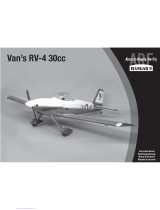 Hangar 9 Van's RV-4 Manuale utente
Hangar 9 Van's RV-4 Manuale utente
-
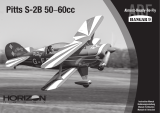 Hangar 9 HAN2390 Manuale del proprietario
Hangar 9 HAN2390 Manuale del proprietario
-
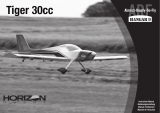 Hangar 9 HAN2370 Manuale del proprietario
Hangar 9 HAN2370 Manuale del proprietario
-
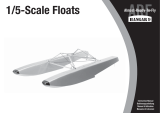 Hangar 9 HAN6030 Manuale del proprietario
Hangar 9 HAN6030 Manuale del proprietario
-
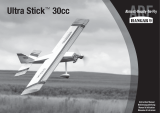 Hangar 9 HANGAR 9 Ultra Stick 30cc Manuale del proprietario
Hangar 9 HANGAR 9 Ultra Stick 30cc Manuale del proprietario
-
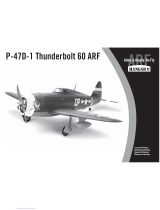 Hangar 9 P-47D-1 Thunderbolt 60 Manuale utente
Hangar 9 P-47D-1 Thunderbolt 60 Manuale utente
-
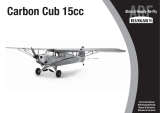 Hangar 9 HAN5065 Manuale del proprietario
Hangar 9 HAN5065 Manuale del proprietario
-
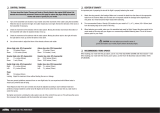 Hangar 9 HAN5065 Manuale del proprietario
Hangar 9 HAN5065 Manuale del proprietario
-
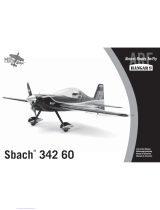 Hangar 9 Sbach 342 60 Manuale utente
Hangar 9 Sbach 342 60 Manuale utente
-
Evolution 33cc Manuale del proprietario
Altri documenti
-
arf EFL2790 Manuale del proprietario
-
Ryobi RLT30CET Manuale del proprietario
-
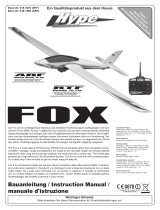 HYPE 018-1560 Manuale utente
HYPE 018-1560 Manuale utente
-
E-flite EFL2790 Manuale del proprietario
-
Evolution EVOE10GX Manuale utente
-
Blade BLH4925SC Manuale del proprietario
-
Garmin GRF 10 Rorfeedback-sensor Guida d'installazione
-
Kmart 42643845 Manuale utente





























































































